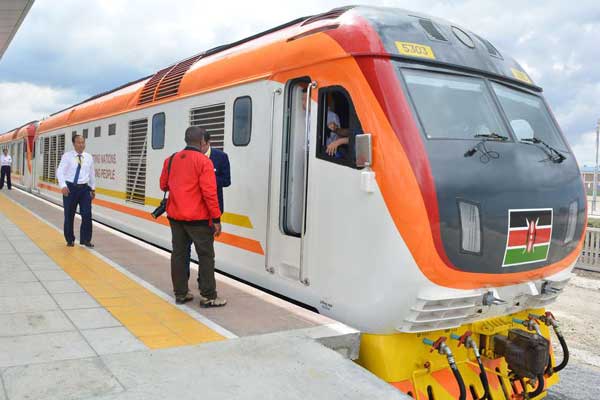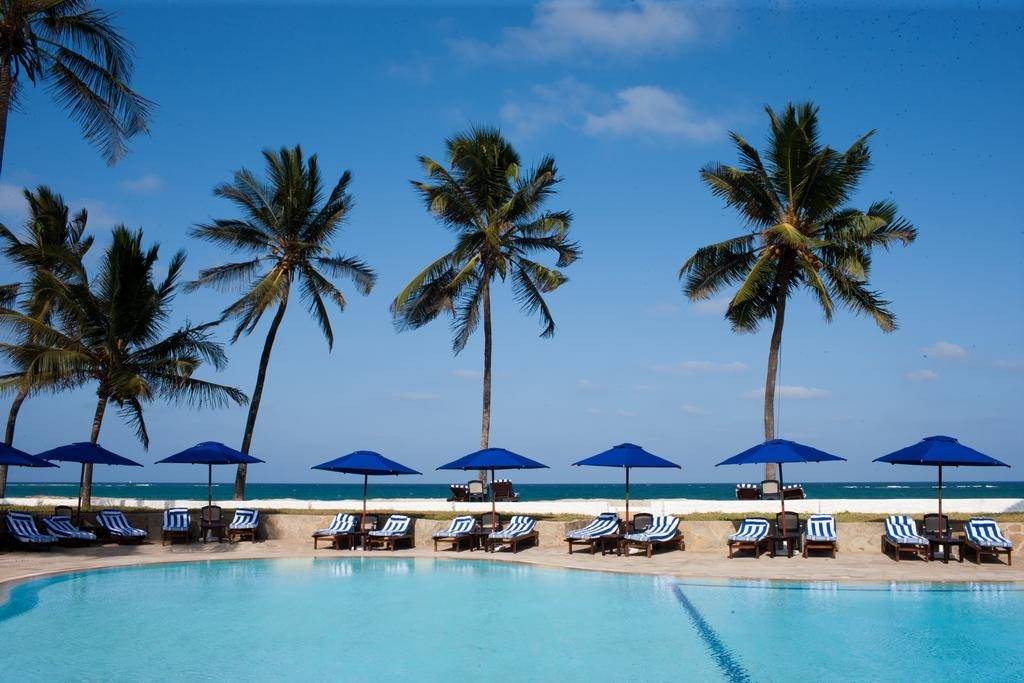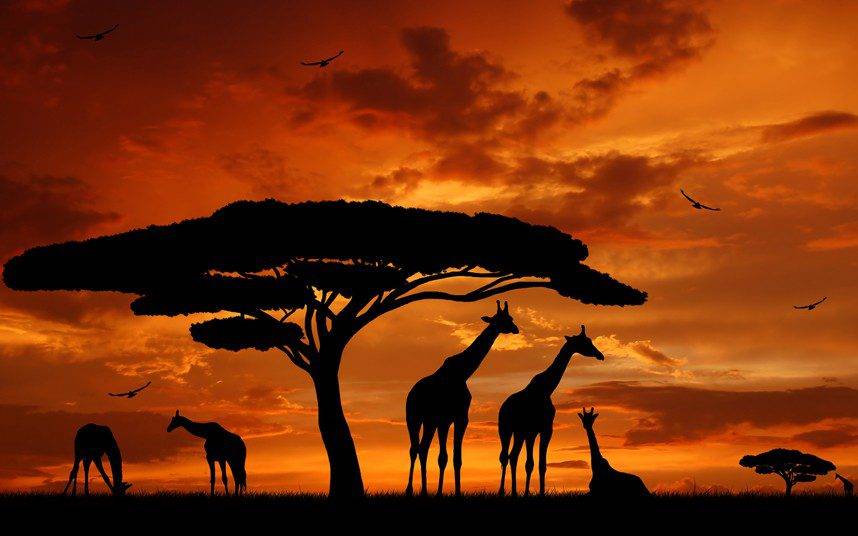Kenya Is Once Again Africa’s Top Business Travel Destination But How Much Of The Tourism Hype Is Justified?

Over time, Kenya has proven to be one of the best tourism destinations in Africa. Its vibrant tourism ecosystem has severally placed Kenya on the global map. The country that is shaped like a harp has won big at this year’s World Travel Award (WTA) after bagging a couple of awards.

Yet again, Nairobi, Kenya’s capital was named Africa’s Leading Business Travel Destination recently. Kenyatta International Convention Centre (KICC) was awarded Africa’s Leading Meetings and Conference destination. This was the second time Nairobi is winning this award as it scooped the same laurel in 2016.
Kenya Airways (KQ), the country’s national carrier, also recently bagged two awards: Africa’s Leading Airline in Business Class Category and the second award in the Leading Economy Class category.
Kenya Airways has been a pivotal player in boosting Kenya’s tourism sector. The airline has liaised with many other airlines to offer direct flights to tourists’ top destinations like Maasai Mara, Malindi, Mombasa, Nanyuki, Samburu, among others. But how much of the hype around the tourism sector of the East African nation is justified? Perhaps a good chunk of it.
Tourism is to Kenya is what oil is to Nigeria and Libya, and maybe even more. Names like Eliud Kipchoge and other champions of long-distance racing may come to mind when thought is given to Kenya, but it is, in fact, the country’s pedigree in the area of tourism that puts it on the map. And for good reasons too.
While foreign tourists have been the major boost of the sector for a long time, the locals are starting to grab a slice of the pie. Domestic tourism has recently been a big boost to the vibrant sector. As of early 2018, it was gathered that the total number of hotel bed nights occupied by Kenyans increased by 500,000 to reach four million in 2017, signalling an increase of 3.5 per cent from the prior year. Domestic tourism recorded a 15.9 per cent growth during the period.
The growth was attributed to cheaper flight tickets and cheaper deals by tours and travel companies as well as the growing number of middle-class citizens with more disposable income who can afford leisure travel.
Typically, for decades, Kenyans have been reluctant to travel for leisure, even during holidays. If they decide to do so, they normally go to their rural homes and spend time with their families. But today, the trend seems to be changing.
Throw that in with the millions of foreign nationals that troop into the country yearly for sightseeing and other experiences that have pleasure at its centre and what you get is a healthy tourism sector that is a key driver of the economy of East Africa’s leading nation.

Kenya offers a combination of nature’s scenic, breath-taking views, great food, warm people, and metropolitan life that can rival some of the world’s most developed cities, puts the country on the front row with some of the world’s most fascinating tourist destinations. The word ‘Safari’ is almost synonymous with the name Kenya. The country that has proven its prowess in the athletics world is renowned as the ‘heart of the African safari – possibly because even decades later it remains one of the few African countries that offer an immensely authentic safari experience, giving a throwback to what it was like many years ago. The word ‘Safari’ is almost synonymous with the name Kenya. Known to many as an Apple browser, Safari is Swahili word meaning an overland journey. Among other captivating views, a Safari in Kenya will give you a glimpse of the diverse wildlife in their natural habitat.
Earnings From Tourism
Tourism in Kenya has seen steady growth since independence. The sector slowed down in the 1990s, but it is currently the state’s largest foreign exchange earner. The sector contributes approximately 10 percent to the Gross Domestic Product (GDP) and employs about 11 percent of the total workforce in the country.
Tourism earned Kenya USD 1.55 Bn in 2018 after the number of visitors rose by 37 percent. The earnings were a 31.2 percent improvement from the USD 1.19 Bn earned in 2017. Statistics showed that there were 2,025,206 international visitor arrivals compared with 1,474,671 in the previous year; a 37 percent increase.
Visitors from the United States represents Kenya’s leading market, growing by 11.12 per cent with 225,157 arrivals. Other top source markets for Kenya are Tanzania, Uganda, United Kingdom, India, China, Germany, Italy, South Africa and France. The nature of the visits mostly entail holidaying, then a significant number of others come for business and conference, visiting friends and relatives.
The improvement was attributed to political stability, improved security situation, growth in the aviation sector, investor confidence, withdrawal of travel advisories, and visits by foreign dignitaries and international conferences held in the country.
Among the improvements in aviation sector during 2018 include improvement of services at the Jomo Kenyatta International Airport (JKIA), direct flights from Nairobi to New York, Air France making a comeback flying three times per week and the Qatar Airways Doha-Mombasa flight.

Normally, prolonged electioneering period and political unrest have negatively impacted the sector, but 2017 was a unique year because, despite the high political temperatures coupled with the extended electioneering period, there was a 20 per cent growth in tourism.
During the 2007-2008 period, the tourism industry was severely affected as tourist arrivals slumped from the highest peak of the decade; 1,817,000 in 2007 to 1,203,200 in 2008. Earnings dropped from USD 644 Mn to a low of USD 520 Mn on as visitors kept away from the country.
In the years that have since followed, the revenue has been recording a commendable increase.
Highlights
Kenya has been recognized on four occasions as the world’s best safari destination by the World Travel Awards. Despite a myriad of occasional challenges, the sector has attracted millions of the world’s tourists.
In 2012, Kenya was voted as having Africa’s leading Tourist Board during the World Travel Awards (WTA) in the UK. The country was also honoured with the Best African Tourist Board in Africa Award at the Safari Awards held in London.
Tourism Cabinet Secretary Najib Balala put Kenya on the global map after he was elected Chair of the United Nations World Tourism Organisation for Africa for the 2017-2019 term. He was also credited for spearheading the country’s tourism sector’s recovery efforts following bouts of terror attacks that almost crushed the sector.
The Coastal part of Kenya is the most popular tourist destination for both local and international tourists. For a long time, challenges associated with road travel have hindered the area from fully realising its tourism potential.

With the entry of a comfortable, fast, low cost and safe mode of transport to Mombasa, the Standard Gauge Railway (SGR), the sector has been majorly boosted with more number of tourists visiting the region. Train travel offers the most breathtaking scenery along the Nairobi-Mombasa route especially the stretch that traverses the Tsavo National Park which is home to a wide variety of wild animals
Also, the launch of direct flights to various destinations like the one-way flight from Nairobi to the U.S. was a key milestone for the country more so considering that America is Kenya’s leading tourism source market.
Modern Tourism
Modern tourism is closely linked to development and entails a growing number of new destinations. These inclinations have turned tourism into a key driver for socio-economic progress.
Today, the tourism sector equals that of oil exports, food products or automobiles in terms of revenue injection. It has become one of the major players in international commerce and represents one of the main income sources for many developing countries.
Modern tourism has come with the concept of responsible tourism which is tourism that can be consumed in a more responsible way. The kind which minimizes negative social, economic and environmental impacts and generates greater economic benefits for local people.

The concept of responsible tourism is slowly gaining ground in Kenya. For instance, the Maji Moto community, located in the heart of Maasai Mara has come together to improve health, education, the environment, and ensure a sustainable livelihood for all.
It is through tourism that they strive to maintain cultural values, ceremonies and traditions while trying to eliminate harmful practices such as female circumcision, early marriage, and lack of education.
Salaton Ole Ntutu, the founder of Maji Moto Community, leads his people in collaborating with international foundations on projects and ongoing efforts to improve the health and future of their people.
When tourists visit, they are invited to stay and experience a bit of Maasai life. Tourists visiting the camp stay in mud huts modernized with just enough creature comforts to keep everything cosy during chilly nights on the Loita plains.
During the day, Maasai guides lead nature walks, teach warrior skills or beadwork, and share what being a modern Maasai means to them. Responsible tourism projects like this one for Maji Moto is shaping the face of modern tourism.

Key Challenges
- Insecurity
Insecurity is a major challenge pulling down the performance of Kenya’s tourism industry. Cases of terror attacks, especially, has slowed down the performance of the sector as it scares away potential visitors.
Between 2011 and 2017, there were on average 60 attacks each year carried out by different groups, each varying in magnitude. Most of which are suspected to have been perpetrated by Al-Shabaab. These include huge attacks in 2002 on Paradise Hotel in Mombasa, Westgate Shopping Mall in 2013 and Garissa University in 2015.
Each terror attack has a different impact on tourism and this is influenced by variables, for instance, the extent of the attack in terms of lives affected, the damage it has caused, places targeted, and the length of the siege. These factors will determine the level of media coverage, and the level of perceived risk among business and leisure travelers.
- Poaching
Around 20,000 elephants are killed in Africa every year for their tusks. It is not only elephants which are killed, rhinos, lions among other wildlife are also killed. Poaching endangers some of the most iconic species to become extinct within only a few decades. It threatens wildlife and the larger tourism industry as it is costing Kenya millions of tourism dollars.
- Political instability and diseases
Following the post-election violence of 2007, tourists have the fear of visit Kenya during an election period as they are uncertain of the eventualities that may come with it. Some of them are cautious and would not risk visiting Kenya during such sensitive times. Disease outbreaks including the airborne ones like swine flu and Ebola also pose a threat to the industry.

Shortcomings Of The Industry
- Stagnation In Evolution
With all the glitz and glamour in Kenya’s tourism sector, there still remains a number of key issues that are holding it back from realising its full potential. First and foremost, the sector has failed to fully adapt and innovate in line with global trends.
Most Kenyan attraction sites have not been advanced, tourism is all about pristine conditions. If a tourist pays a visit to a place with a very old swimming pool that is not maintained, chances are they will never return. A number of facilities both state-owned and private remain old and unattractive because there is no will to spend on renovating.
- Reluctance To Fully Embrace Technology
The country has also not leveraged on technology to the fullest to boost tourism numbers. There is a need for tourism-related business owners to invest in digital presence. This is because many tourists across the globe rely on the internet to research about places to visit. The availability and variety of travel information help them to decide on their destinations, activities and other things.

While this is the case, most Kenyan tours and travel companies as well as Kenya’s official tourism destination site, Magical Kenya, remains outdated or poorly set up.
Stakeholders should note that an attractive and well-designed website full of content will help boost the number of tourists visiting the country. A regularly updated and relevant Kenyan tourism content will yield better outcomes for the sector and that is where work needs to be done.
“Technology pervades every area of tourism and must be given the highest priority when developing the workforce for the industry,” said a 2016 report from the United Nations World Travel Organization.
With Kenya’s captivating topography, a cable car could be the most ideal mode to showcase its diverse terrain from an aerial view, the country has however not been keen to leverage on such technologies to attract more tourists.
- Corruption
Corruption has immensely negative impacts on a country’s tourism sector. For Kenya, corruption has almost become the country’s second name. Having to pay bribes while on holiday or even a business trip leads to an unnecessary increase in the cost of travelling.
Policemen often pull a vehicle full of tourists over, look for leverage to get money out of tourists. Some hotels, especially middle-class ones would intentionally miscalculate the final bill in order to part with something for their pockets.
When corruption is prevalent, it means the visitor will have to part with some bribe a couple of times. Because of this, tourists are more likely to travel to countries where these additional costs do not need to be incurred.

- Outrageous Costs
While some tourists may be comfortable with the pricing for hotels, park entrance and general travel costs, some feel that the costs are a bit on the high side.
For instance, the cost of entrance for an adult Kenyan citizen at the Nairobi National Park is about USD 4.25 while the charges for a non-resident is USD 43.00. The difference in pricing is tenfold.
There is such a huge disparity between the two and for sure, some Kenyan attraction sites are losing potential visitors owed to the extraordinarily high fee for foreign tourists.
Kenya is not an easy budget travel destination especially for tourists who opt to stay in the top-rated hotels. One can part with up to USD 210 for a one-night accommodation with only breakfast served in the top-rated lodges where most foreign visitors feel safer staying.
- Traffic Congestion And Poor Attitude Of Road Users
Many tourists have reported Kenyan road users as ‘reckless’. Some of them, owing to the scary experience they went through, opt never to return to Kenya.
Tourists attitudes can be affected by endless traffic jams. Traffic congestion causes failures in the estimation of arrival time and creates a perception of uncertainty among the foreign tourists which then negatively influence their attitude towards visiting Kenya.
The Way Forward
Kenya is yet to reach its full potential. Compared to other Africans markets like Morocco and South Africa which respectively record over 10 million and 9.5 million international tourists annually, their numbers are five times the number of international tourists visiting Kenya every year.
With key improvements of the sector, Kenya will be better placed because of its apt location and it will be a prefered destination for visitors from various parts of the globe.
Kenya has thousands of potential tourism sites, a significant number has been developed while there is a number of many other potential sites that remain unexplored.

Check out the top ten most preferred destinations in Kenya:
⦁ Maasai Mara Region
⦁ Kenya’s Coastal Region
⦁ Nairobi City and its environs
⦁ Amboseli
⦁ Lake Nakuru
⦁ Tsavo National Park
⦁ Mount Kenya
⦁ Lake Victoria
⦁ Hells Gate
⦁ Lake Naivasha
Featured Image Courtesy: Flickr